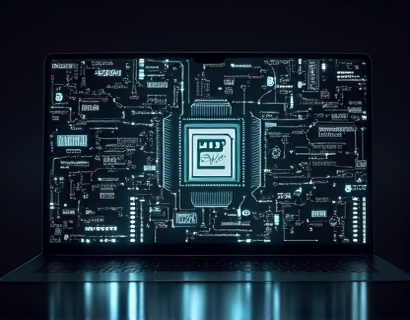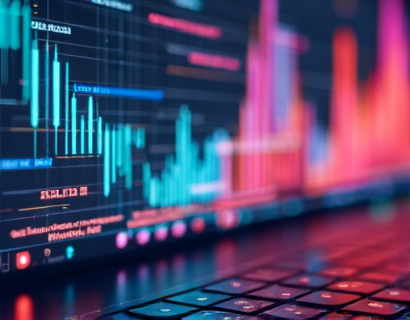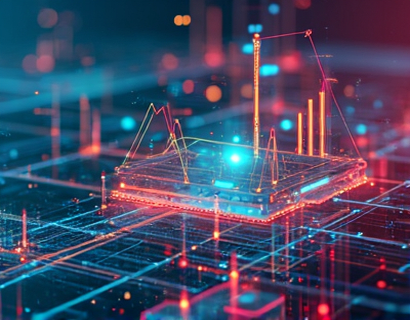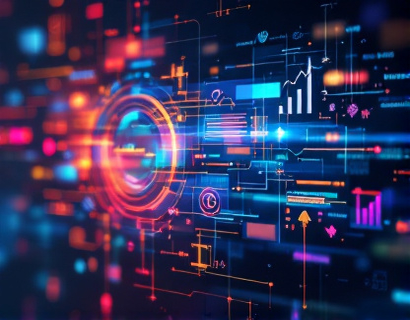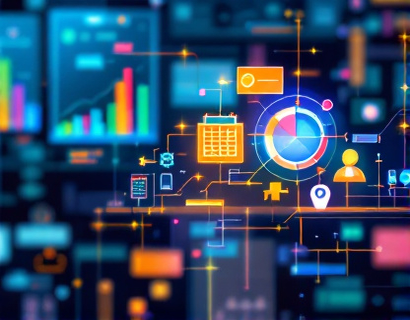Unleashing Next-Gen Engagement in the Digital Ecosystem: The Synergy of AI and Crypto
The digital landscape is undergoing a profound transformation, driven by the powerful convergence of artificial intelligence (AI) and cryptocurrency. This synergy is not just a technological curiosity but a pivotal force reshaping how we interact with digital services and platforms. For tech professionals and enthusiasts, understanding and leveraging this convergence is crucial for staying ahead in the rapidly evolving tech ecosystem. This guide delves into the advanced strategies and insights that can enhance user interactions and drive growth, offering a comprehensive look at how AI and crypto are revolutionizing digital engagement.
The Intersection of AI and Cryptocurrency
The intersection of AI and cryptocurrency is a fertile ground for innovation. AI technologies, including machine learning, natural language processing, and predictive analytics, are being integrated into blockchain-based systems to create more intelligent, secure, and user-friendly digital experiences. This integration is not just about combining two advanced technologies; it's about creating a new paradigm where data is more meaningful, transactions are more secure, and user interactions are more intuitive.
One of the primary ways AI enhances cryptocurrency is through improved security. Machine learning algorithms can detect and prevent fraudulent activities by analyzing patterns and anomalies in transaction data. This real-time monitoring and threat detection significantly reduce the risk of cyber attacks, making blockchain-based systems more reliable and trustworthy. For instance, AI-driven security protocols can identify suspicious behavior and automatically trigger alerts, ensuring that users' assets are protected.
Enhancing User Interactions with AI
AI is revolutionizing user interactions by providing personalized and context-aware experiences. In the realm of cryptocurrency, this means creating more intuitive and user-friendly interfaces for wallets, exchanges, and other financial services. AI-powered chatbots and virtual assistants can offer real-time support, answering queries and guiding users through complex processes with ease. This not only improves user satisfaction but also reduces the learning curve associated with adopting new technologies.
Personalization is another key area where AI shines. By analyzing user behavior and preferences, AI can tailor recommendations and services to individual needs. For example, a cryptocurrency wallet app can suggest optimal times for trading based on market trends, or recommend specific coins that align with a user's investment goals. This level of personalization fosters a deeper connection between users and digital services, enhancing engagement and loyalty.
AI-Driven Market Insights
One of the most significant advantages of AI in the cryptocurrency space is its ability to provide actionable market insights. Traditional market analysis relies heavily on human interpretation of data, which can be time-consuming and prone to errors. AI, on the other hand, can process vast amounts of data in real-time, identifying trends, patterns, and correlations that might not be immediately apparent. This capability is invaluable for investors and traders who need to make informed decisions quickly.
Predictive analytics powered by AI can forecast market movements with greater accuracy, helping users timing their trades more effectively. Sentiment analysis, another AI application, can gauge public sentiment towards specific assets by analyzing social media, news articles, and other textual data. This insight can inform investment strategies and risk management, providing a competitive edge in the fast-paced crypto market.
Blockchain and AI for Decentralized Applications
The combination of blockchain and AI is giving rise to decentralized applications (dApps) that offer new levels of autonomy and transparency. dApps leverage the immutable and decentralized nature of blockchain to create trustless environments where users can interact without intermediaries. AI enhances these applications by providing intelligent and adaptive functionalities.
For instance, AI can optimize smart contracts, ensuring they execute efficiently and securely. Machine learning models can predict and adjust parameters in real-time based on changing conditions, making dApps more responsive and reliable. This synergy is particularly evident in decentralized finance (DeFi) platforms, where AI-driven algorithms can automate lending, borrowing, and trading processes, reducing friction and increasing accessibility.
Building Trust Through Transparency
Trust is a critical factor in the adoption of both AI and cryptocurrency. AI can enhance transparency in blockchain-based systems by providing clear and verifiable insights into transactions and processes. Blockchain's inherent transparency, combined with AI's ability to analyze and present data in an understandable format, creates a powerful tool for building trust. Users can verify the integrity of transactions and the performance of services with greater ease, fostering a more trustworthy digital ecosystem.
Moreover, AI can help in auditing and compliance, ensuring that blockchain-based systems adhere to regulatory standards. Automated compliance checks and reporting can streamline the process, reducing the burden on organizations and users alike. This level of transparency and accountability is essential for the widespread adoption of these technologies.
Challenges and Considerations
While the potential of AI and cryptocurrency is immense, there are challenges that need to be addressed. One of the primary concerns is the complexity of integrating these technologies. Developers and organizations must have a solid understanding of both AI and blockchain to implement solutions effectively. This requires a skilled workforce and significant investment in research and development.
Another challenge is the regulatory landscape. As AI and cryptocurrency continue to evolve, regulatory frameworks are still catching up. Ensuring compliance while innovating is a delicate balance. Organizations must stay informed about regulatory changes and adapt their strategies accordingly to avoid legal pitfalls.
Privacy is also a critical consideration. While AI can provide valuable insights, it often requires access to large amounts of data, raising concerns about user privacy. Implementing robust privacy-preserving techniques, such as differential privacy and homomorphic encryption, is essential to protect user data while still leveraging AI's capabilities.
Future Trends and Opportunities
The future of AI and cryptocurrency is bright, with numerous trends and opportunities on the horizon. One promising area is the development of AI-powered decentralized autonomous organizations (DAOs). DAOs combine the decentralized nature of blockchain with AI's decision-making capabilities, creating self-governing entities that can operate with minimal human intervention. These organizations can automate governance, funding, and resource allocation, opening new possibilities for community-driven projects.
Another exciting trend is the integration of AI with non-fungible tokens (NFTs) and other digital assets. AI can enhance the creation, valuation, and trading of NFTs by providing unique and valuable attributes, such as dynamic content or interactive experiences. This can lead to new forms of digital art, collectibles, and even virtual real estate, expanding the crypto ecosystem's horizons.
Furthermore, the rise of edge computing and 5G technology will enable more efficient and real-time AI processing, making blockchain-based applications even more responsive and scalable. This convergence will pave the way for innovative use cases in areas such as IoT, smart cities, and augmented reality, further blurring the lines between the physical and digital worlds.
Conclusion
The synergy between AI and cryptocurrency is transforming the digital ecosystem, offering unprecedented opportunities for enhanced user interactions and market leadership. By leveraging AI's advanced capabilities, blockchain-based systems can become more secure, personalized, and transparent. For tech professionals and enthusiasts, embracing this convergence is essential for staying competitive and driving innovation. As we continue to explore and harness the potential of AI and cryptocurrency, the future of digital engagement looks more promising than ever.


















